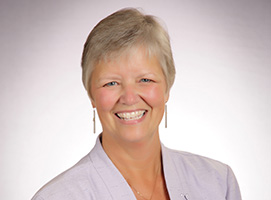student success
Motivational and Satisfaction Data to Guide Career Services at Private Four-Year Campuses
This blog was co-written by Brandi Phillips, Executive Consultant for Student Success Solutions, RNL. A forthcoming blog will look at results for four-year public institutions.

Using student data to inform decision making is a powerful way to improve student success. Hundreds of colleges and universities work with RNL annually to capture both the motivational levels of their individual first-year and second-year students and the satisfaction levels across their student populations. When reviewed in tandem, this combination of data from various populations can guide institutions on how to meet student expectations.
RNL offers respected student success survey instruments to capture student motivation and student satisfaction. The Retention Management System (RMS), including the College Student Inventory, the Mid-Year Student Assessment, and the Second-Year Student Assessment, provide the motivational perspective by identifying academic and non-academic factors that can impede individual students’ ability to stay successfully enrolled while simultaneously offering specific, data-informed recommendations for student’s success and retention. The Satisfaction-Priorities Surveys (SPS), with the Student Satisfaction Inventory, look at the satisfaction levels within the context of how important experiences are inside and outside of the classroom. These survey instruments have been in the higher education marketplace for 30 years and provide an opportunity for institutions to understand where they can best serve their students successfully from two different, yet interrelating, perspectives: up-close with individual students and with a wider view across the entire student population.
RNL is developing a framework to guide institutions in looking at their RMS and SPS results together. As part of this process, we are also examining the national data sets to provide insight into the big picture view at four-year private and four-year public institutions across the country, focusing on particular topics that are reflected in the surveys. This analysis identifies the items on both survey instruments which support how an institution can use the data from multiple surveys to guide activities in particular topic areas.
The first topic for consideration is career services, which is an area that helps link the currently enrolled student experience to what comes after graduation. When students understand the value of the career guidance provided by the college and have the support services in place to meet their needs, there is an opportunity for greater success, for the individual student and for the institution as a whole. This blog will examine career services at four-year private colleges and universities—we’ll look at four-year public institutions in a forthcoming blog.
Career services at four-year private colleges and universities
Freshmen completing the College Student Inventory
Students first entering the institution complete the College Student Inventory (CSI) as an admissions checklist, during orientation or as part of a Freshman Year Experience Course (FYE). The individual reporting for the student and their advisor/counselor provides areas for exploration and identifies the services needed to support the student in staying enrolled.
The vast majority of incoming students at four-year private institutions have identified a career path of interest, with 83 percent of freshmen stating they have found a potential career that strongly interests them. In addition, a large percentage have actually begun planning their lives around the occupation they have decided to enter. However, more than half of incoming freshman indicate a strong desire for career support with specific requests for guidance, five items in total, ranging from 52-69 percent. Survey items referencing wanting help selecting an educational plan that will prepare me to get a good job (69 percent agree) and talking with someone about qualifications for certain occupations (65 percent) were the highest of the five.
| Item | True: Mean=50% on a scale of 1-99% |
| I have found a potential career that strongly interests me. | 83% |
| I have begun planning my life around the occupation I have decided to enter. | 65% |
| Choosing an occupation is very confusing to me. | 24% |
| I’m confused about what occupation to pursue. | 21% |
| I would like to talk with someone about the qualifications needed for certain occupations. | 65% |
| I would like some help selecting an educational plan that will prepare me to get a good job. | 69% |
| I would like to talk with someone about the salaries and future outlook for various occupations. | 57% |
| I would like some help selecting an occupation that is well suited to my interests and abilities. | 52% |
| I would like to talk with someone about the advantages and disadvantages of various occupations. | 52% |
Freshmen completing the Mid-Year Student Assessment
The Mid-Year Student Assessment (MYSA) is a follow-up inventory to the CSI and provides a pulse check on students’ needs and their completed activities as they conclude their first term at the institution.
At the mid-point of their first year, nearly half of freshmen want assistance with career services. More students want help than received help during the first term. These strong numbers indicate a need for intentional career-related activities embedded early in the first year and continuing through the first and second terms. The strong numbers of students who have a career that strongly attracts them continues at the mid-year with 81 percent. Thirty-four percent of students indicate that they have received help discussing advantages and disadvantages of various occupations, but 46 percent still desire assistance in this area. The largest gap shows that 33 percent received help discussing salaries and future outlook for various occupations, but 48 percent still desire assistance.
| Item | True: Mean=50% on a scale of 1-99% |
| I have found a potential career that strongly attracts me. | 81% |
| I have made a firm decision to enter a certain occupation and have begun planning my life around that decision. | 76% |
| My interest in career services | Received help already – indicating yes | Want to receive help this term – indicating yes |
| Discuss qualifications for certain occupations | 45% | 49% |
| Receive help with an educational plan to prepare for a good job. | 43% | 48% |
| Discuss salaries and future outlook for various occupations. | 33% | 48% |
| Discuss advantages and disadvantages of various occupations. | 34% | 46% |
| Receive help selecting an occupation well suited to my interests and abilities. | 37% | 42% |
Sophomores completing the Second-Year Student Assessment
The Second-Year Student Assessment (SYSA) is completed by students at the end of their first year or at the very beginning of their sophomore year. It can be administered as a follow up to the CSI and MYSA, or independently. It identifies which campus supports students have received assistance in their first year and specific resources they desire as they begin the next step in their educational journey.
As they enter their second year at four-year private institutions, we see a significant percentage of students who desire career guidance. The top five areas include: 44 percent requesting help preparing a written academic plan for graduation, 44 percent needing assistance with figuring out the impact of their grades on their academic major, 51 percent wanting to define goals suited to their major and career interest(s), 51 percent seeking help with exploring advantages and disadvantages of their career choice and 64 percent requesting to identify experiences or internships related to their major.
| Student needs and interests | Received help last year – indicating yes | Want to receive help this year – indicating yes |
| Select an academic program or major | 53% | 32% |
| Prepare a written academic plan for graduation | 35% | 44% |
| Figure out the impact of my grades on my academic major | 33% | 44% |
| Discuss transfer questions and issues | 15% | 18% |
| Define goals suited to my major or career interest(s) | 36% | 51% |
| Explore advantages and disadvantages of my career choice | 28% | 51% |
| Identify work experiences or internships related to my major | 33% | 64% |
All class levels completing the Student Satisfaction Inventory
The Student Satisfaction Inventory (SSI) is administered across all class levels at the institution, asking students to indicate how important an experience is to them along with how satisfied they are that the institution is meeting their expectations. A gap is calculated by subtracting the satisfaction score from the importance score. Larger gaps indicate greater discrepancies between the two scores.
For the survey item, There are adequate services to help me decide upon a career, we see the highest level of importance for first-year students, before the importance scores decline with each following class level. Satisfaction levels also start out higher for freshmen and then drop as the student progresses. The largest gap in meeting expectations on this item is for seniors. It is worth considering the phrasing of the item saying “decide upon a career,” since we know from the RMS data that students enter the institution with a strong belief of the career they want to pursue.If the item were phrased in terms of seeking career guidance for applying their major to a getting an actual job or for getting direction on internships for practical experiences, the importance and satisfaction scores may reflect different perceptions.
| Item: There are adequate services to help me decide upon a career. | Important/Very Important | Satisfied/Very Satisfied | Gap (Importance minus Satisfaction) |
| Freshmen | 85% | 65% | 20% |
| Sophomores | 83% | 59% | 24% |
| Juniors | 83% | 57% | 26% |
| Seniors | 82% | 52% | 30% |
What these data help us see is that many colleges may think career services are important at just the junior and senior level but really they are important at the freshman and sophomore levels while students are still connecting what they think they want to be when the grow up with their course work and the possibilities of work in the areas that they are interested in. The findings here support the idea that institutions could better promote, prioritize and deliver career services to both first-year and second-year students since we know that career outcomes and career motivation can be influential factors in keeping students enrolled.
Learn more about strengthening student success with assessments
The power of these data are evident in the insights they provide on your student populations. Using these data to inform student success activities can have a positive impact on retention and graduation rates. Please contact me if you would like to explore using your RMS and SPS data sets to support your student success efforts or if you are interested in implementing either of these assessments in the future.
